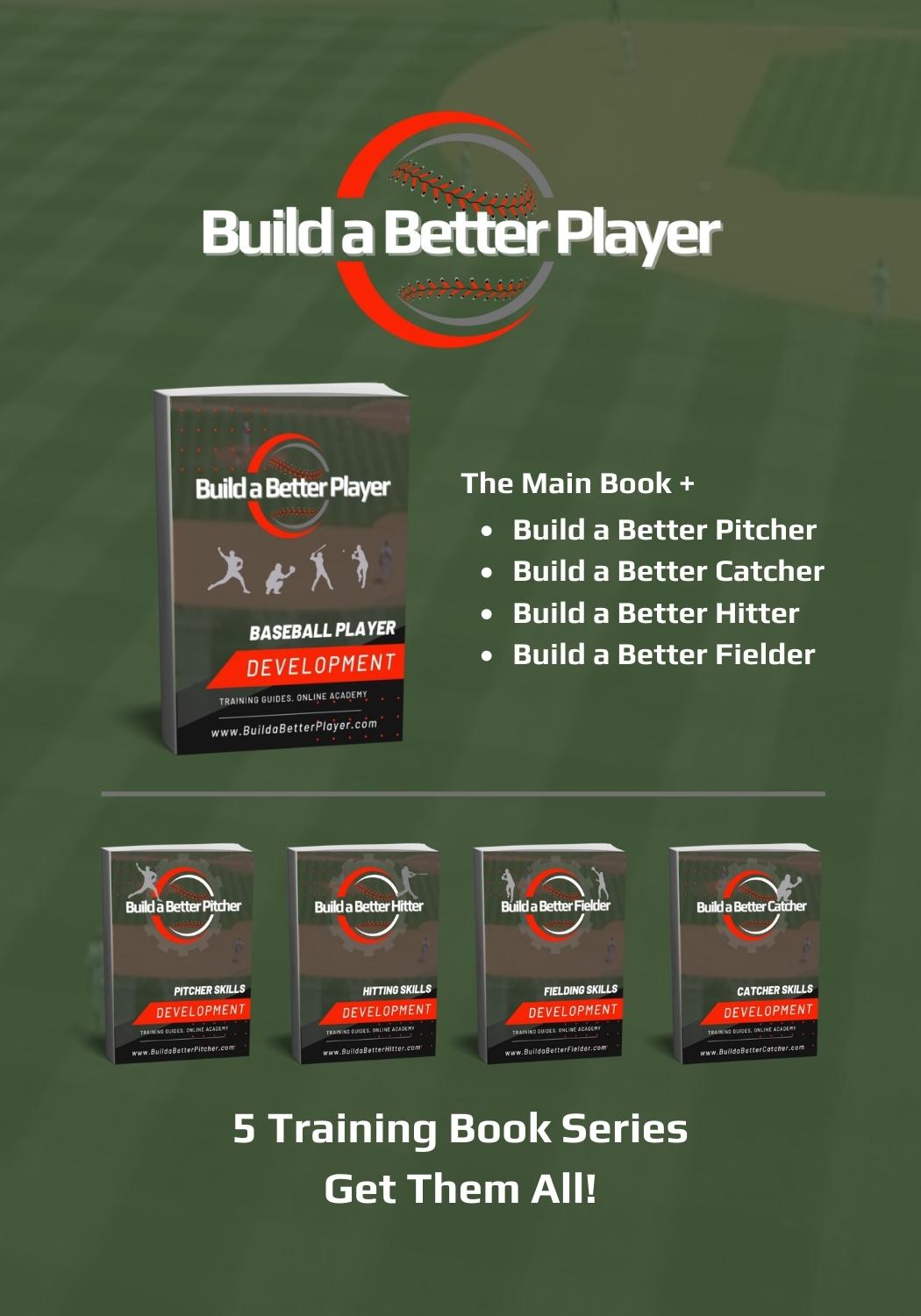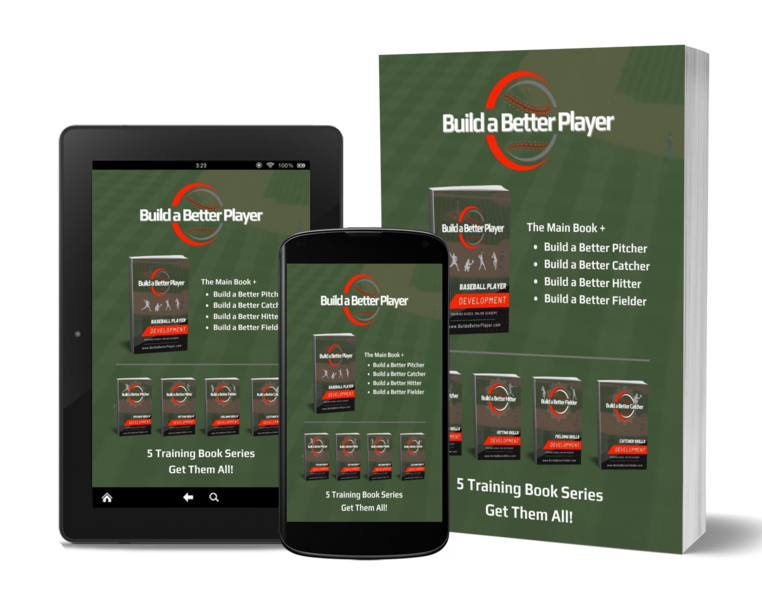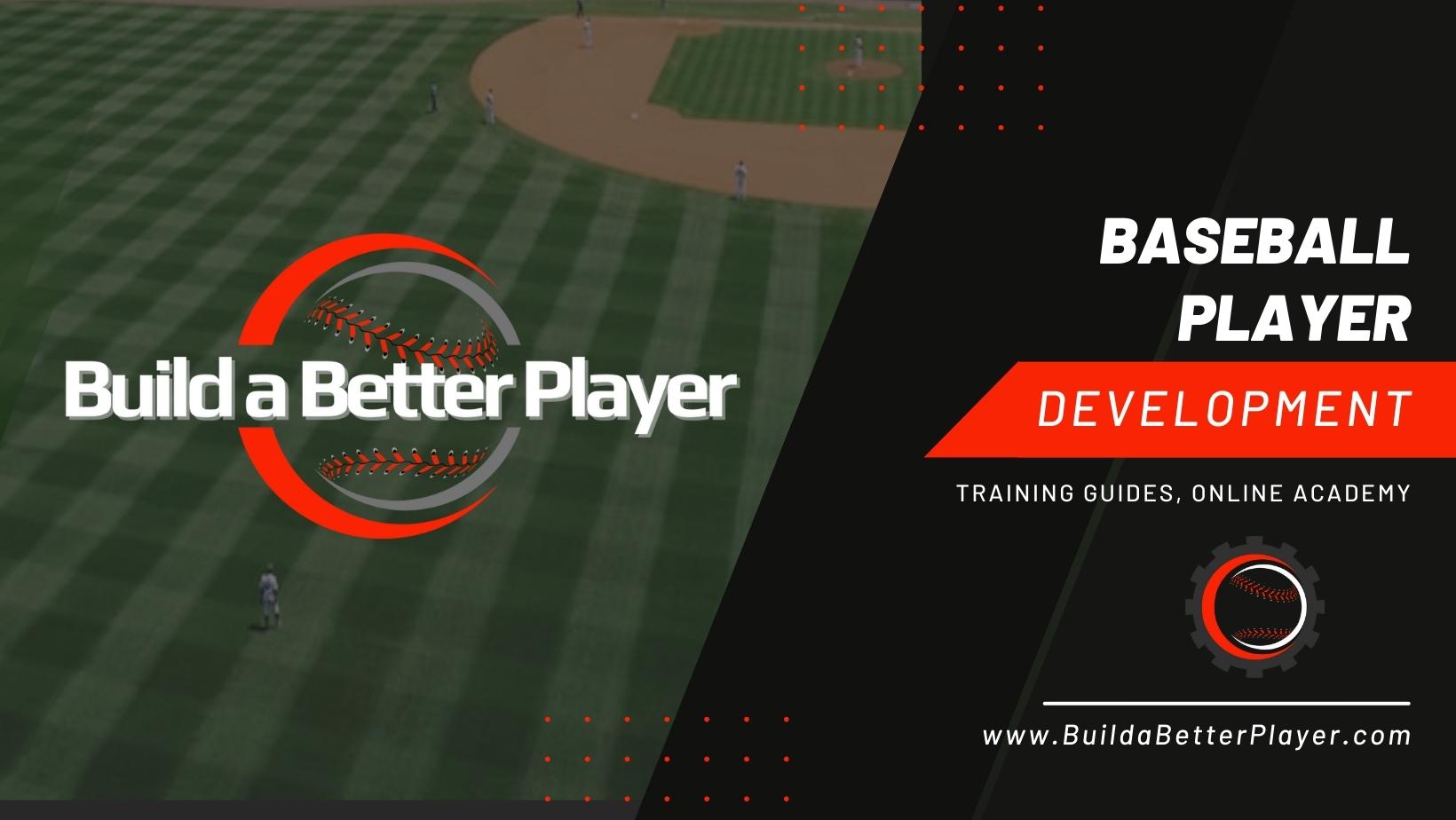More about
Build a Better Player!
Baseball Training for Youth, Travel & High School Baseball Players.
This 5 Book Series Covers the BIG Skill Areas in Baseball.
Pitching: Book #2 - Pitching Development "Deep Dive"
Hitting: Book #3 - Hitting Development "Deep Dive"
Fielding: Book #4 - Fielding Development "Deep Dive"
Catching: Book #5 - "Catcher" Development "Deep Dive"
BuildaBetterCatcher.com
For the "Catcher Position" (just for clarity)
What Makes Our Training Content Different?
Tried, Proven, Refined, Refined Some More... And the RESULTS are REAL!
We have developed this content over many years and many levels.
Some of the content is purely our own and much, as with most sports training & development has been taught to us by Coaches and Mentors we had along the way. The later material and much of the more advanced content has been modified and improved simply by watching, learning, asking questions and getting positive feedback.
The Reality is this: All of the Training Material in these 5 Books has been used, tested, vetted with REAL Players from the age of 7 or 8 all the way to players that are 20, 21 years old.
And many are playing at the collegiate level today.
What are the chances of a high school athlete making the transition to the college level? We compared the number of athletes participating in varsity sports at US high schools to the number of college student athletes. Overall a little over 7% of high school athletes (about 1 in 13) go on to play a varsity sport in college and less than 2% of high school athletes (1 in 57) go on to play at NCAA Division I schools. So let's take a LOOK. And remember, this data is referring to High School Players.
Whittle the number down if your player is in Rec Ball (7 to 11), Travel Ball, 8 to 13... Of course the further the player progresses their chances go up.
>>>> BREAK DOWN TIME <<<<<
But one of our REAL EYE OPENERS was the "FALL OFF" at Age 13! Why?
Well one of our observations was simply this:
The young players that were more physically developed early most often performed at a higher level early. This led them to get more playing time, giving them a chance to improve by simply playing the game.
Almost ties to the 10,000 Hour Concept. But is it Really. We think Not.
We think it is the simple concept of the "Law of the Jungle"... The Bigger & Stronger Players perform at a higher level. Much the same way the Russians chose their Gymnasts & Hockey players to go to the training camps.
But in Youth Baseball, what was the Deal with "AGE 13"? And what happens when those players that dominated early lose interest, get burned out, stop growing, stop training.
There are a myriad of factors, but those players that excelled on a 200 foot field and on a 50 foot Mound often have a rude awakening once the field goes to 250, 275, 300... 400!
And what about the Mound? 50 Feet versus 60 Feet. That is 10 Feet. A 12 Year Old throwing 50 to 60 mph at 50 Feet is like a High Schooler throwing 85-90 mph at 60 Feet.
But there is an opposing factor in the Mound Scenario. The Batter gets to see the Ball for an additional 10 Feet. All of those "Think and Miss" Swings at the Lower Level... Hmmm? Many of those kids that stick with it, find that extra 10 feet to be an eternity with "SEEING THE BASEBALL".
Point to this breakdown is that there is a HUGE FALL OFF at age 13. HUGE! We experienced it ourselves as Travel Ball Coaches. So we just wanted to make sure we clarified that the numbers below, regarding the % Odds of making it to the College Level need to be put into perspective. You would first have to find out how many boys play recreational baseball from age 6 or 7 and then adjust the numbers below to further compound the difficulty of playing high school or college.
>>>> BREAK OUT OF THE BREAK DOWN TIME <<<<<
And we are back... Check Out the Numbers Below!
What are the Odds? |
Male Athletes |
High School |
College US |
% Playing College |
% D1 |
College Odds |
D1 Odds |
511,383 |
65,373 |
11,867 |
12.4% |
2.3% |
8:1 |
43:1 |
The Point of us pointing out the above was simply this:
We had an average of 12 to 13 Players on our Travel Ball Teams. Add in 4 or 5 More that were Guest Players.
If we take our 18 +/- Players and then do the math based on how many have made it to college... We are at 10 out of 18.
I might be missing 1 or 2. So let's say 11 out of 18 Players. 60% of our Players are Playing in College!
Pretty Strong Numbers!
And you know what they say... "Numbers Don't Lie". And Baseball is a Numbers Game.
Oh, they LOVE their Stats! Ever heard of Sabermetrics? Learn More About it Here.
And the Point was this: Our Training Methods & Content is also Pretty Strong!

The Main Goal of "Build a Better Player":
Ultimately, the Goal is to make the Player's Performance Better & More Consistent.
Provide a clear development path to help them achieve their competitive goals.
And of all things that we have witnessed over the years, nothing makes the sport better or the player's attitude better than performing at a Higher Level.
Performing at Higher Level in Baseball "IS" the Path to the Next Level!
The Benefits TO THOSE WHO LISTEN & APPLY:
What are the Top 5 Benefits of a Youth Baseball Player getting Quality Training?
There are several benefits that a youth baseball player can gain from quality training.
Here are our 5 that Players & Parents tell us about: (We know!)
Improved Skills: Quality training can help youth baseball players develop and improve their fundamental skills, such as hitting, pitching, fielding, and base running. By mastering these skills, players can become more confident and perform better on the field.
Injury Prevention: Quality training can also help prevent injuries. By teaching proper techniques for throwing, catching, and other baseball-related movements, players can reduce the risk of developing overuse injuries or other types of injuries that can be caused by improper form or technique.
Increased Physical Fitness: Baseball requires a combination of strength, speed, agility, and endurance. Quality training can help youth baseball players improve their physical fitness, which can enhance their performance on the field and reduce their risk of injury.
Improved Mental Toughness: Baseball can be a mentally challenging sport, and quality training can help youth players develop mental toughness. Through drills and exercises that simulate game-like situations, players can learn to handle pressure, stay focused, and make smart decisions under stress. This can translate into improved performance both on and off the field.
Improved On & Off Field Attitudes: The amazing thing we have found over the years, is that Better Performing Athletes have a Better Attitude. Sure there are some that are just "Bent out of Shape" all of the time over everything. Some of it is age, hormones, environment. But more often than NOT, it is hard to be in a Bad Mood when you are Crushing It on the Field! No it is not a "Magic Pill" and it is NOT 100% Guaranteed. But it does not take a Ph.D. to Figure this One Out! Give it a Try!


Training Content created for every player, but it feels like it was created just for you!
And coming in Fall of 2023... Want it customized? We are going to be offering Super Affordable Remote Coaching Sessions with detailed 'Custom Training Plans" based on your Video Submissions.





